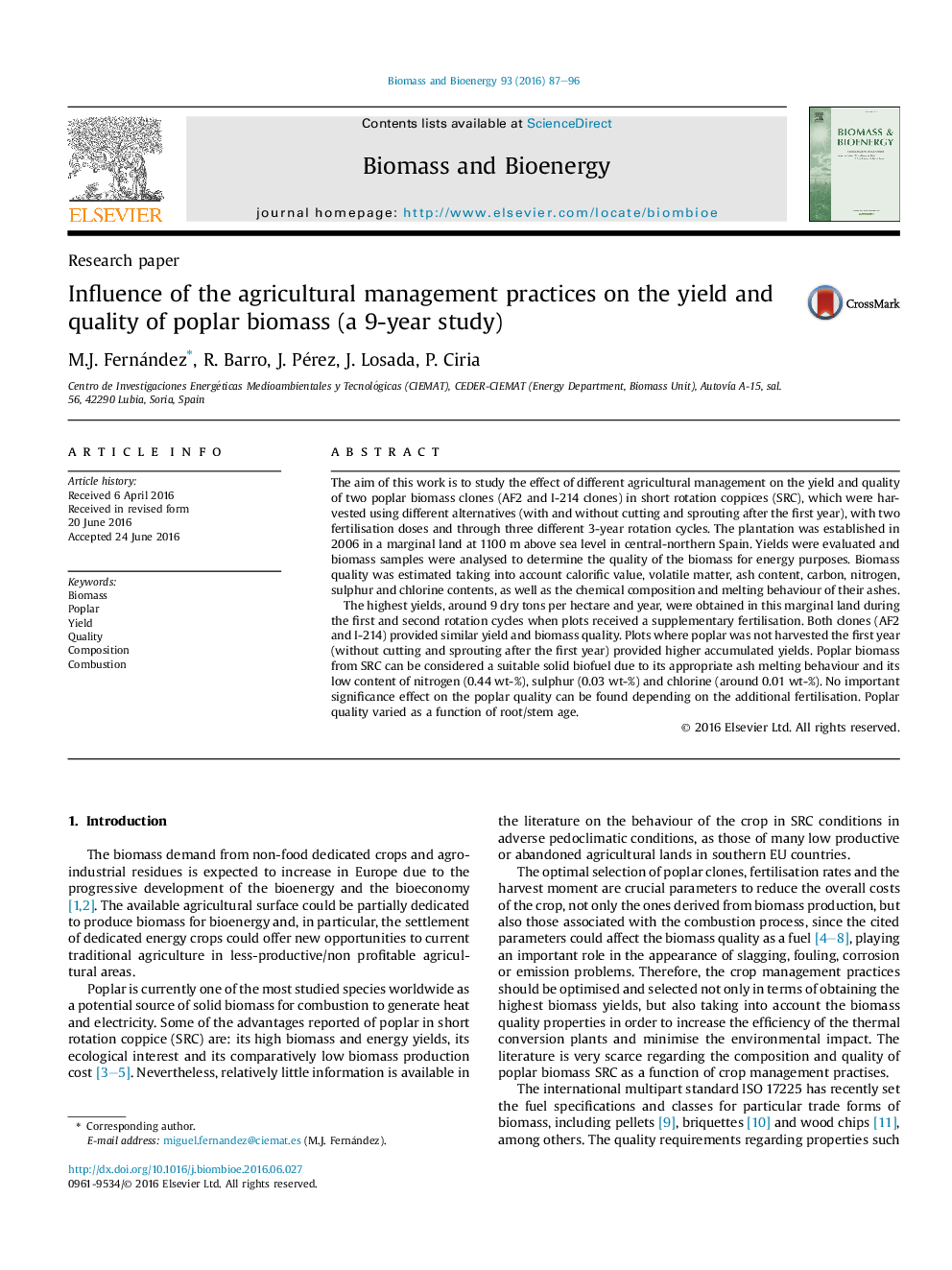| Article ID | Journal | Published Year | Pages | File Type |
|---|---|---|---|---|
| 7063164 | Biomass and Bioenergy | 2016 | 10 Pages |
Abstract
The highest yields, around 9 dry tons per hectare and year, were obtained in this marginal land during the first and second rotation cycles when plots received a supplementary fertilisation. Both clones (AF2 and I-214) provided similar yield and biomass quality. Plots where poplar was not harvested the first year (without cutting and sprouting after the first year) provided higher accumulated yields. Poplar biomass from SRC can be considered a suitable solid biofuel due to its appropriate ash melting behaviour and its low content of nitrogen (0.44Â wt-%), sulphur (0.03Â wt-%) and chlorine (around 0.01Â wt-%). No important significance effect on the poplar quality can be found depending on the additional fertilisation. Poplar quality varied as a function of root/stem age.
Related Topics
Physical Sciences and Engineering
Chemical Engineering
Process Chemistry and Technology
Authors
M.J. Fernández, R. Barro, J. Pérez, J. Losada, P. Ciria,
